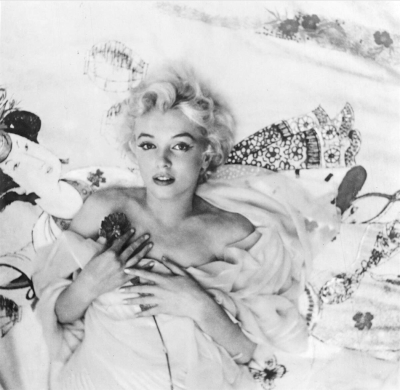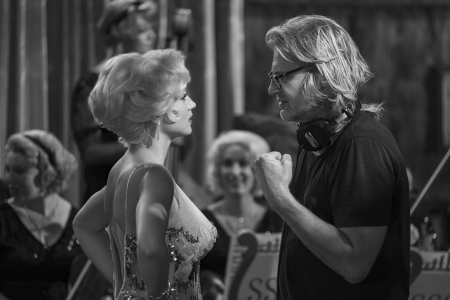I guess there isn’t any Norma Jean, is there?
— Blonde, Andrew Dominik
The first image of Marilyn Monroe I have ever seen is a photo of her, up on the wall of the living room in the house where I grew up. It has been there for as long as I can remember and it is still there today. I have never paid too much attention to it, to be honest, even when I understood who the charming lady was. It seemed like an icon from a past I did not feel really attached to. Recently, while reading Joyce Carol Oates’ Blonde and right before watching Andrew Dominik’s film of the same name, I have had the chance to look at the photo more closely. Once again, it eluded me. Where is Norma Jeane here?
Oates and Dominik ask themselves the same question and set out to explore what phrasing it means, way before searching for an answer. What Oates aptly discovers and what Dominik bravely takes away from her book is that in order to understand the woman behind Marilyn Monroe one has to start from her body and think of how she lived it. This could explain why Oates’ and Dominik’s works have been met with mixed reactions. There is no point in expecting the story of Marilyn Monroe or asking for another apologetic tale of belated repentance, just as it makes no sense to complain about how shattered one’s own mental picture of her will be after the last word and the last scene. Quite the contrary. The fragments Oates and Dominik disperse should be treasured as pieces of a bigger puzzle everyone is required to complete.

Indeed, Marilyn Monroe remains a mystery the solution of which cannot be found neither in Oates’ book nor in Dominik’s film. Still, the pages and the images provide a specific point of view, an angle from which one can observe Marilyn Monroe and try for themselves to find a way in her world of mirrors, illusions, fame and failure, tragedy and eternity. I have the utmost respect for a writer, a director or, generally speaking, an artist who provokes me or even infuriates me. As long as a reaction to what is placed in front of me is demanded, art is already doing the right thing regardless of any aesthetic consideration. I like to think I deserve a bit of credit from an artist, I want to believe they know they can rely on me doing my best to engage with their effort. Simply put, I may not share the artist knowledgeable background, but it does not mean that I should be treated as a goof.
This is why I felt so compelled by Oates and Dominik. They refuse to pamper their audience and keep pushing forward whatever they think worth of our attention. Take Oates, for instance. She offers a plethora of voices, never at peace with a simple opinion, deliberately refusing to add details for the sake of completeness. What if the reader cannot understand a specific passage because they are not familiar with Norma Jean’s youth? What if they cannot recognise names, places, events? Oates does not care. She points at the source material for her book in the very first pages, so the reader knows how to fill the gaps if so inclined. Eventually, Oates shapes facts, invents characters, exaggerates situations, and breaks conventional pictures of Marilyn Monroe. What we read is beyond the true-false dichotomy. Only Norma Jean painfully knows what is true and what is false about Marilyn Monroe.

Dominik accepts Oates’ uncompromising imagination and dives as deep as possible in the horror of this story. The director plays to great extent with Norma Jean being an avatar of Marilyn Monroe. One would expect the exact opposite, but Dominik convincingly insists on the psychological power of Monroe, a white men product, over the fragile woman who was never able to overcome it. Monroe takes apart Norma Jean mind and body, destroys her private life every time she tries to get it back, and owns her to the end until exhaustion. Much like Oates, Dominik picks what makes sense to him from the book and, to a larger extent, from Monroe’s life. And just like the writer, the director twists specific moments and develops new scenarios with remarkable effect. Look, for example, at his shocking depiction of Norma Jean’s nightmares or marvel at the outstanding yet unsustainable last minute of the film.
Both authors have been criticised for their supposedly merciless treatment of a sacred icon like Marilyn Monroe. Again, destabilising common conscience and subverting given myths is precisely what art should do. Oates’ and Dominik’s works aim at the same target: where does entertainment end? More than twenty years separate the film from the book, but this question is as relevant today as it was back in the early 2000s.